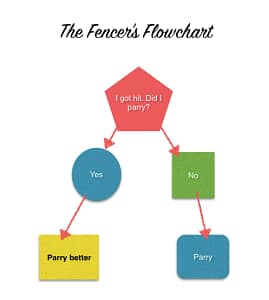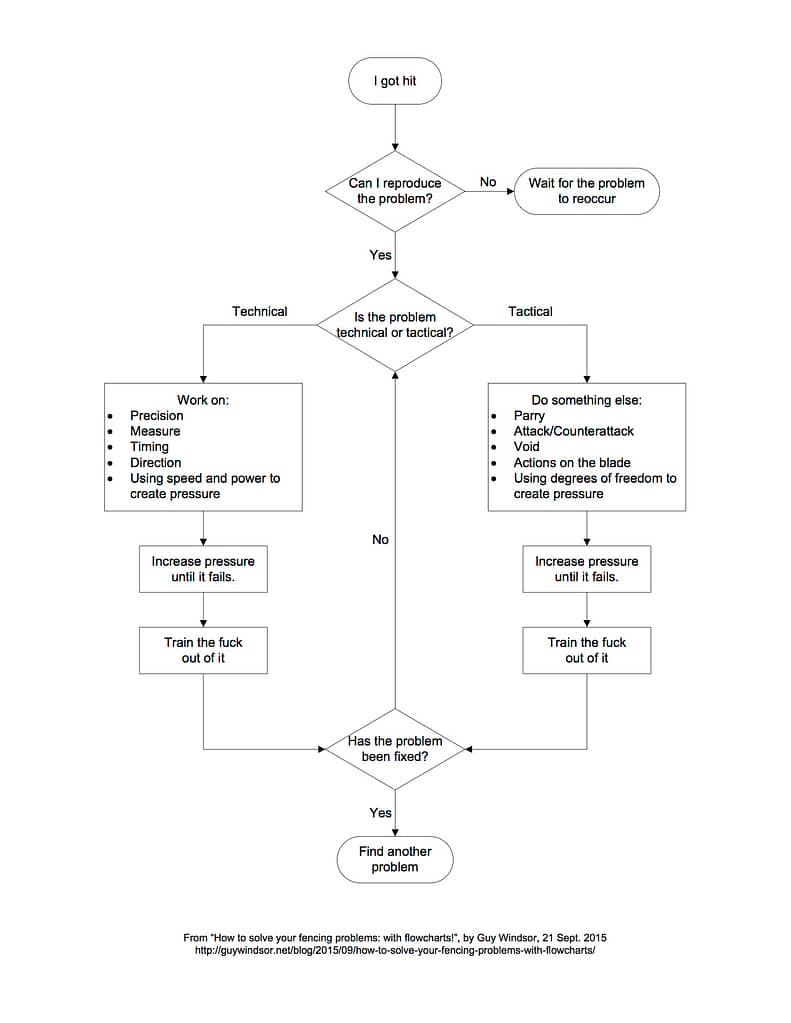Boldness is a key virtue in swordsmanship. Perhaps the key virtue. Under the Lion on the famous segno page, Fiore wrote “Piu de mi leone non porta core ardito. Por di bataglia fazo a zaschun invito”. Nobody has a bolder heart than I, the Lion. I call everyone to battle.
It is a key virtue, and one which can be trained for. I cover it in breadth and depth in my book Swordfighting, but didn’t include there the specific exercises we use in class to begin the study of boldness. In the women’s class I lead in Seattle recently, the participants explicitly requested boldness as a topic, so I took them through the following sequence. This was a longsword class in which most of the participants were relatively inexperienced, so these exercises were done relatively slowly.
The first step, always, is decide what you’re working on. In this case, boldness. So the only thing that matters (other than “everyone finishes class healthier than they started it”) is whether you are embodying that virtue in the constraints of the drill. It’s ok for technique and other things to suffer.
The flinch is the enemy. Your body’s instinctive jerking away from threat needs to be brought under control. For many people, simply having their personal space invaded is enough to make them flinch, but to train martial arts effectively, you have to get comfortable with people getting right up in your face. So we began with the standing step drill, in which two players face each other square on in a wide stance, touch wrists, and then try to make the other player take a step. Move a foot, you lose.
This involves pushing and being pushed, some arm locks, and once the first level is comfortable, you can introduce things like gentle face-slaps. Anything that does not threaten your position can be ignored, so it’s remarkable how quickly incidental contact, that would have created a flinch before, becomes something the players can simply choose not react to. It also gets everyone playing together in a useful way. The next level is to allow one step, in either attack or defence; you lose when you make a second foot movement.
This drill is all about standing your ground, grounding, tactics, misdirection, wrestling, locks, throws… it’s a very good way to get beginners into the game. It also caused a lot of hilarity in the class, which in the circumstances was a good thing; it broke the ice, and made being brave easier. I also covered what to do if you are much bigger and stronger, or more experienced: take it to the very edge of your balance, and play from there.
After this, we did some basic sword handling, so I could assess the level of the class as a whole, and then we got started with step one of first drill: defender on guard in tutta porta di ferro, the attacker strikes a mandritto fendente (controlled, of course) to the head. The defender does nothing.
That is hard. Don’t blink. Don’t flinch. Don’t even change your breathing. Stare over the attacker’s shoulder and do absolutely nothing as the blade touches your mask. We also do this exercise with no masks and no contact. It’s harder, for most people. The exercise should be done at the rate that maintains the difficulty for the defender, so long as that doesn’t take the attacker past the point where they can properly control their strike.
Now we have identified the problem, flinching, we have to set up exercises in which it will happen naturally, allowing you to practise preventing it, in circumstances of ever increasing complexity. Remain calm and dispassionate. It’s really better to get hit in training than to practise flinching, because every time you flinch, you are ingraining that response in your nervous system.
Once you can remain impassive against the attack, you can defend against it with much better precision, so from here, move on to the second step of the drill; actually defending yourself. Now it’s the attacker’s turn to be impassive about being struck.
Boldness is also about moving forwards against the threat. In the Lonin loft they have two car tyres hanging from the ceiling, which act as pells and striking targets, so from here we moved on to hitting the tyres: approaching boldly, striking hard and moving away under cover. This was fun, and should be trained regularly, not least to make you aware of just how hard you can hit.
We then went back to the pair drills, and worked on the attacker’s bold entry. During this time, I prepped one of the students, and then gave orders for the class to go as hard and fast as they could, with no masks, to really hit each other. A dangerous, stupid, thing to do with a class at this level. But the teacher was telling them to… and the student I had prepared beforehand said, quietly but firmly, “no”. I said “what the hell do you mean, no?”, and she replied “no, it’s too dangerous.”
It takes boldness to stand up to authority figures when they are not acting in your best interests, and as with all necessary skills, it can and should be trained for. Roleplaying the scenario can really help. So what the class saw was one of their own (boldly) saying no to a dangerous exercise, in defiance of my authority. That was probably much harder, required more boldness, than simply not flinching when a friend gently approached with a sword.
Training for boldness only works if the situation is one in which it is hard to be bold, but you can just manage it. It is especially important to emphasise that success is defined only by whether you manage to act in a way that demonstrates the virtue of boldness according to the scenario of the drill. No other factors are important. This is the key to successful training. In weightlifting, you either lift the weight the prescribed distance, or you don’t. Success is easy to define. When training for virtues, success is more difficult to pin down, which is why I like controlling the flinch as the starting point; it’s the easiest way to check on physical courage. We can take this out into the wider world too; let’s say you have difficulty talking to strangers, so you set yourself a task of asking one stranger for directions every day on your way to work. It doesn’t matter if you stammer, or if you forget what they tell you, or if they are rude, or any other thing; you did it if you went up to someone you don’t know and asked. Success is making the attempt.


















